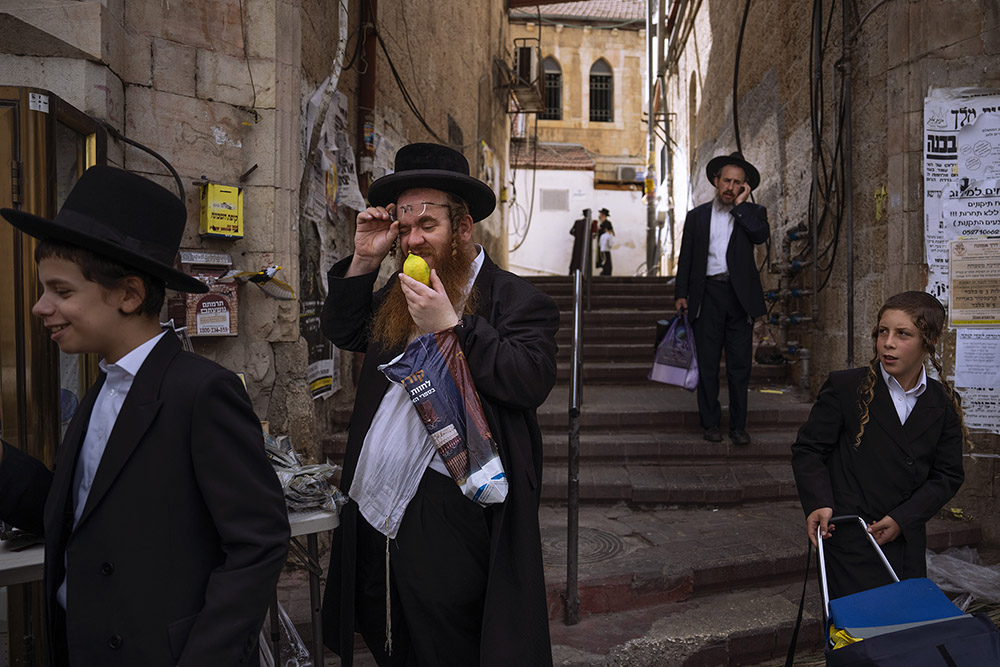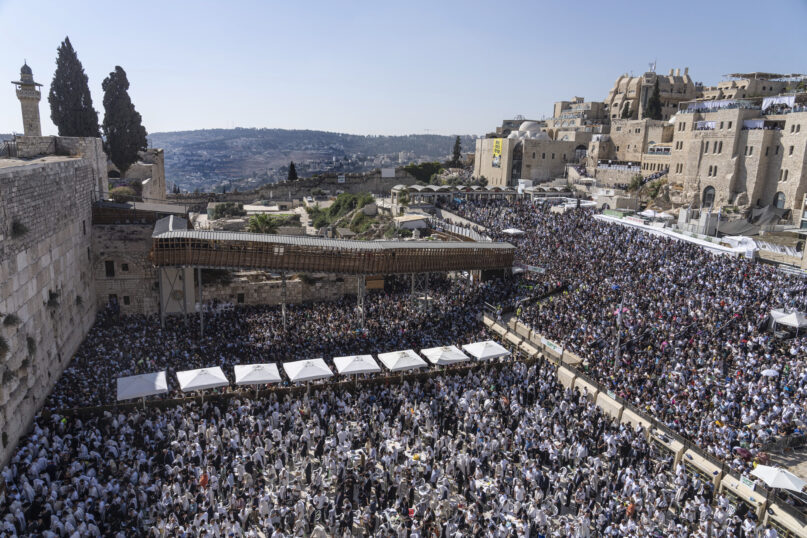(RNS) — As we wrap up this year’s celebration of Sukkot, I’d like to give this relatively unknown holiday its due.
In most of the modern Jewish world, Sukkot is the anticlimactic finale of the High Holidays, coming a week after Rosh Hashana and Yom Kippur. Jews might share a meal or two in an outdoor booth, cop a feel of an overpriced citron and watch the rabbi shake a bouquet of palm, myrtle and willow fronds.
But once upon a time, this first of ancient Israel’s three annual pilgrimage festivals, or hagim, was the biggest of deals, the occasion for extended and extensive celebrations in the Jerusalem Temple. Indeed, Sukkot is sometimes referred to simply as “The Hag” and is the only holiday for which rejoicing is mandatory.
The celebration of Sukkot is prescribed in the Book of Leviticus. Native-born Israelites are commanded to live in booths (sukkot) — temporary tabernacles that, the Bible says, serve to recall the shelters used by the Israelites wandering in the desert after their departure from Egypt. But sukkot also seems to refer to the shelters that agricultural workers put up in the fields at harvest time.
Sukkot is itself constructed so as to connect the fall harvest with Israel’s sacred narrative. We can see this manifested in the four aforementioned “species”: the citron (etrog) and the bound-together tree fronds (lulav). The comprehensiveness of the holiday is demonstrated by the custom of shaking the species in every direction: north, south, east, west, up, down.
The etrog is the fruit of a cultivated tree and so represents the harvest itself. Exodus calls Sukkot the Feast of Ingathering, hag ha-asif, indicating the secular dimension of the holiday — the substratum that refers to the common agricultural life of all peoples.
In that regard, it seems appropriate that the Sukkot liturgy includes the reading of Ecclesiastes. This is the most secular of the books of the Bible, the one most devoted to the normal life cycle with all its joys, pains and tedium.

An ultra-Orthodox Jewish man inspects an etrog, a citrus fruit, to determine if it is ritually acceptable as one of the four items used as a symbol on the Jewish holiday of Sukkot, in Jerusalem’s Mea Shearim neighborhood, Friday, Oct. 7, 2022. (AP Photo//Oded Balilty)
The other three species — the ones that are put together to make the lulav — can be seen as representing the three main stages of the sacred history of the Jewish people.
The palm tree — tamar — has to do with the Israelites’ journey through the Sinai Desert. A few days after the parting of the Sea of Reeds, the Israelites arrive at Elim, where (as Exodus puts it) “there were twelve springs of water and seventy palm trees; and they encamped there beside the water.”
This oasis is their second camping place, and it seems to be remembered as the most pleasant of the encampments — no grumbling there, as there was both at the first camp (Marah) and afterward in the wilderness of Sin. The biblical association of Sukkot with the wandering in the desert comes, as we have seen, in the passage in Leviticus.
The key to the myrtle is its smell. After the Babylonian exile, incense became central to the cult of the Second Temple, which was equipped with a special altar for burning it located inside the Holy of Holies. But after incense became impossible to make or obtain, myrtle became the substitute, referring to the period of Temple worship in the Land of Israel.
Finally, the lulav has a branch of willow — specifically, the willow of the brook (aravi nahal). Willows were first used on Sukkot as a shield for the altar in the Temple and then in daily processions on Sukkot.
Finally, after the destruction of the Temple, it was featured during a procession on the seventh day of Sukkot and called hoshana. This “hosannah” is a cry for salvation that looks to the messianic age.
This gesture at the messianic age to come is encapsulated in the prophetic reading for the first day of Sukkot from the prophet Zechariah. In it, Jerusalem is sacked by Israel’s enemies, whereupon the Lord defeats them, and Jerusalem is transformed into a source of water for all — to the eastern and the western sea, “and the Lord shall be king over all the earth; in that day there shall be one Lord with one name.”
Sukkot thus becomes the ultimate pilgrimage festival, which the survivors of all the nations who have attacked Israel and been defeated will come to Jerusalem to celebrate.
Meanwhile, let us note that in the earliest version of the Gospel of John, Jesus is greeted on Palm Sunday with cries of Hosannah, which is to say that he was seen by his people that day as the promised Messiah. Let’s call that Sukkot’s contribution to the Christian tradition.






